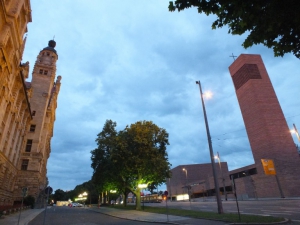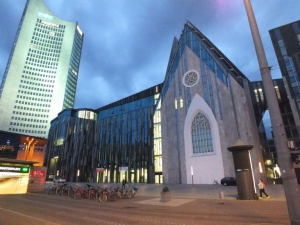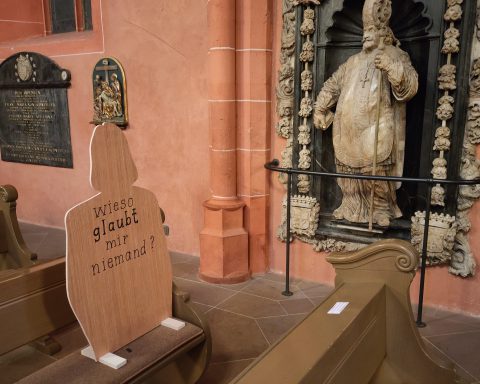It’s been nearly a month since the 100. Katholikentag (100th anniversary Catholic Day) rushed through the city of Leipzig, leaving many with memories of fresh, but uniform green scarves and unfamiliar musical events. Some doubts remain as to whether this event was heaven or hell for Leipzig, or – less dramatically – if it was some sort of okayish and to which degree.
The doubts were there from the start. According to a Leipziger Volkszeitung online survey, over 80% of people showed no interest in the event at all. Clearly the LVZ is unlikely to represent all of us. Still, it is the biggest newspaper in town and the trend the survey shows is quite obvious.
For some expats, this suspicion and rejection of religious events from the people of Leipzig might seem strange and irritating. Well, some reasons for their suspicion can easily be found in the mostly atheistic background of Eastern Germany and especially this town. And the rejection might not be really against religions and the events they celebrate, but particularly about this religion and this event and its circumstances.
Let’s get to the facts: Between 25 & 29 May 2016, around 40,000 people gathered in Leipzig to celebrate the 100. Katholikentag.
The central theme of the event was the human being (“Seht, da ist der Mensch”), so one particular event focused on the life of 100 individuals (“100 Tage, 100 Menschen”), including Leipzig’s mayor Burkhard Jung. Another event addressed both believing and not believing in a divine being (“Leben mit und ohne Gott”), and overall there were about 300 events to visit and join. Even a postage stamp of the 100. Katholikentag will be published soon, in case you are in need of a rewarding hobby.
So far so good. Now what’s the issue here, except having the inner city occupied again by thousands of people who enjoy wearing costumes?
A major upset was the one million euros the city of Leipzig sponsored this event with. Critics argue that only 4.4% of the population of Leipzig is Catholic, and that the city regularly has financial troubles as well as very concrete financial needs to support kindergartens, schools and culture. Mayor Burkhardt Jung, however, defended the financial support by calling for more tolerance towards religious minorities.
And that’s where it gets weird. Because in terms of influence, this specific religious minority is no minority at all.
First of all, it wasn’t just one million in tax money. Besides the million from Stadt Leipzig, the Katholikentag got 3 million euros from the federal state of Saxony, as well as 500,000 euros from the German government. So altogether 4.5 million euros from governmental institutions in a secular and ideologically neutral country, supporting (well… preferring) one specific religion. Let’s just imagine for a moment the outrage, if it had been Leipzig’s Muslim 3% instead of the Catholic 4.4% getting this support and spotlight.

Secondly, you just cannot miss the Propsteikirche, the new Catholic church at Willhelm-Leuschner-Platz. Whereas the Muslim community in Leipzig is facing threats and pig heads on stakes for planning to build a mosque in Gohlis, the Catholics quite easily built a huge church in the center of Leipzig, entirely changing the cityscape. It’s even as tall as the City Hall across the street.
And last but not least, let’s also give the Paulinum, our new university church that is still waiting for its inauguration, an honorable mention on this list of tolerance towards religious minorities. Half church, half university, it is an impressive sign of segregation between church and state and the independence of science.

So that’s what a pluralistic and secular society should look like?
One cannot help but assume close links between politics and the Catholic Church. And this leaves other religious minorities, as well as the majority of non-religious citizens in Leipzig, with a bad taste of exclusion and inequality.
Let’s move towards a better understanding of “tolerance towards religious minorities” as our mayor called for. But also a more balanced one. And towards more fairly interpreting “Religionsfreiheit”, freedom of religion. Or freedom from religion. It is all about the state of mind.
By Sven Grau









